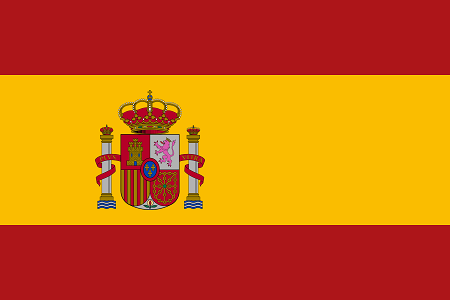Flags of Spanish: History, Meaning, and Regional Variations
Introduction
The flags of Spanish history and culture are some of the most recognized and meaningful in the world. From the bold red and yellow stripes of Spain’s national flag to the diverse regional flags representing Catalonia, Andalusia, Basque Country, and beyond, each flag carries deep historical and cultural significance.
Understanding the flags of Spanish identity means learning about the nation’s history, politics, and regional diversity. In this article, we’ll dive into the origins, symbolism, and different variations of Spanish flags, helping you appreciate their importance from both a cultural and historical perspective.
The National Flag of Spain
Design and Colors
- The flag of Spain features three horizontal stripes: red at the top, yellow in the middle (double width), and red at the bottom.
- On the left side of the yellow stripe is the Spanish coat of arms.
Symbolism
- Red and yellow are said to symbolize strength and generosity.
- The coat of arms represents:
- Crown: Spain’s monarchy.
- Pillars of Hercules: Strength and the motto “Plus Ultra” (Further Beyond), referencing Spain’s global exploration.
- Royal shield: Representing the historical kingdoms of Castile, León, Aragon, and Navarre.
- Crown: Spain’s monarchy.
Historical Evolution of the Spanish Flag
The flags of Spanish identity have changed dramatically through history:
- Middle Ages: Flags of kingdoms like Castile (castle), León (lion), and Aragon (red and yellow stripes).
- Catholic Monarchs (15th Century): Combination of Castile and León with Aragon and Navarre symbols.
- Habsburg Dynasty (16th–17th Century): White flags with royal coats of arms.
- Bourbon Dynasty (18th Century): Shift toward a recognizable tricolor design.
- 1785 Naval Flag Decree: King Charles III introduced red and yellow stripes for easy recognition at sea, becoming the basis for today’s flag.
- 20th Century Variations: Changes under the Second Republic and Francoist Spain before returning to the current design in 1981.
Regional Flags of Spanish Communities
Spain is made up of 17 autonomous communities and 2 autonomous cities, each with its own distinct flag. These regional Spanish flags reflect local history, identity, and pride.
1. Catalonia – La Senyera
- Design: Four red stripes over a golden background.
- History: Dates back to medieval Aragon; a strong symbol of Catalan identity.
- Significance: Represents freedom, independence, and cultural pride.
2. Andalusia
- Design: Green, white, and green horizontal stripes with the Andalusian coat of arms.
- Symbolism: Green for hope and Islam, white for peace.
- Motto: “Andalucía por sí, para España y la Humanidad.”
3. Basque Country – Ikurriña
- Design: Red background, green cross, and white cross.
- Created in 1894 by Sabino Arana, symbolizing Basque nationalism.
4. Galicia
- Design: White flag with a blue diagonal stripe.
- Inspiration: Naval ensign tradition.
- Represents the Galician language and culture.
5. Madrid
- Design: Crimson red with seven white stars.
- Stars represent the seven stars of Ursa Major and Madrid’s position at the center of Spain.
6. Valencia
- Design: Red and yellow stripes with a blue vertical band on the hoist.
- Symbolism: Combination of Catalan tradition and unique Valencian heritage.
7. Canary Islands
- Design: Vertical stripes of white, blue, and yellow.
- Includes the official coat of arms featuring dogs (canes), which gave the islands their name.
8. Navarre
- Design: Solid red with golden chains, representing the Battle of Las Navas de Tolosa (1212).
Spanish Colonial and Historical Flags
Apart from the current national and regional flags, flags of Spanish colonial history also hold importance:
- Spanish Empire Flags: White backgrounds with royal arms during colonial expansion.
- Cross of Burgundy Flag: A red saltire on a white background, widely used in the 16th–18th centuries.
- Spanish Republican Flag (1931–1939): Red, yellow, and purple tricolor, symbolizing opposition to the monarchy.
Flags of Spanish-Speaking Countries
While this article focuses on Spain’s flags, it’s worth noting that Spanish influence spread across Latin America. Many countries adopted flags influenced by Spanish heraldry and colors, including:
- Colombia, Venezuela, and Ecuador: Sharing red, yellow, and blue from Simón Bolívar’s revolution.
- Mexico: Incorporating elements of Spanish colonial history with indigenous symbols.
- Argentina, Chile, and Peru: Influenced by independence movements inspired by Spain’s decline.
Cultural Significance of Spanish Flags
Flags in Spain are not just symbols—they represent cultural identity, politics, and unity/division:
- National Unity: The red and yellow flag unites Spain under one identity.
- Regional Autonomy: Regional flags reflect strong local identities and independence movements.
- Sporting Events: Spanish flags are displayed at international events like the World Cup or Olympics.
- Festivals and Parades: Flags play a major role in religious festivals, military parades, and cultural events.
How the Flags of Spanish Are Used Today
- Government Buildings: National and regional flags are displayed side by side.
- Education: Students learn the history and meaning of national and community flags.
- Tourism: Flags serve as cultural emblems for visitors exploring Spain.
- Politics: Flags often spark debates about independence and national unity.
Interesting Facts About Spanish Flags
- The Spanish national flag is one of the few in the world with an official name: La Rojigualda.
- The coat of arms on the Spanish flag has changed more than 10 times throughout history.
- The Cross of Burgundy flag is still used today by Spanish military units as a traditional emblem.
- Spain’s flag laws ensure it is displayed above regional flags on official government buildings.
FAQs About the Flags of Spanish
Q1: What do the colors of the Spanish national flag mean?
A1: Red symbolizes strength and bravery, while yellow represents generosity and Spain’s golden age of exploration.
Q2: Why are there so many different Spanish flags?
A2: Spain is made up of 17 autonomous communities, each with its own history and cultural identity, reflected in unique flags.
Q3: What is the oldest Spanish flag?
A3: The Senyera of Catalonia is among the oldest, dating back to the 11th century.
Q4: What flag did Spain use during colonial times?
A4: The Cross of Burgundy was the primary military and naval flag during Spain’s global empire.
Q5: Is the Spanish Republican flag still used today?
A5: Yes, it is still used by some groups as a symbol of anti-monarchist sentiment.
Q6: Why does the Spanish flag have a coat of arms?
A6: The coat of arms represents Spain’s historical kingdoms and national motto, reflecting unity in diversity.
Conclusion
The flags of Spanish history and culture tell a fascinating story of monarchy, conquest, regional pride, and modern democracy. From the national red and yellow flag to the regional emblems of Catalonia, Andalusia, and Basque Country, each flag represents a piece of Spain’s identity, tradition, and struggle for unity.
👉 Whether you are a student, traveler, or history enthusiast, learning about the flags of Spanish regions and national symbols provides a deeper understanding of Spain’s complex heritage. Next time you see the Rojigualda flying proudly, remember it’s not just a flag—it’s a story of history, culture, and identity.





Post Comment